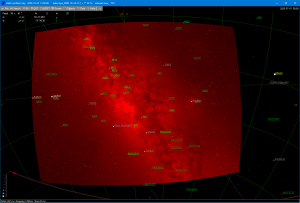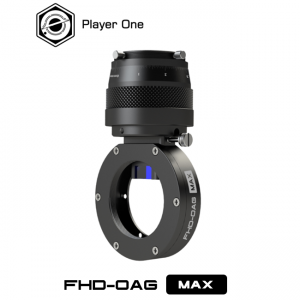The creator of the HNSKY planetarium program has announced the platform has been compiled and released as a beta version for the macOS operating system. Previously available only for MS-Windows and Linux, the HNSKY planetarium program can control your telescope via the ASCOM or INDI interface, has a comprehensive and current deep sky database with 30,000 objects (with detailed descriptions) and native star databases up to magnitude 18.
 The HNSKY planetarium program also includes a star database with millions of stars and hundreds of Deep Sky Survey images which blends in accurately. Additionally, the program can access the online version of the Deep Sky Survey allowing online update of the asteroid and comet databases and it can search on-line in professional astronomical databases. Is provided with menus in 22 languages and it is totally free without any advertisements or restrictions.
The HNSKY planetarium program also includes a star database with millions of stars and hundreds of Deep Sky Survey images which blends in accurately. Additionally, the program can access the online version of the Deep Sky Survey allowing online update of the asteroid and comet databases and it can search on-line in professional astronomical databases. Is provided with menus in 22 languages and it is totally free without any advertisements or restrictions.
The program also provides online access to the GAIA DR2, UCAC4, NOMAD and PPMXL star catalogues and can download the USNO UCAC4 up to magnitude 16. The Sun, Moon, the planets and their major moons are all displayed with surface features. The HNSKY planetarium program maps the position of comets and asteroids with online updating. It is provided with hundreds of DSS deep sky images which will blend in at the correct size and orientation. It has a powerful animation menu and an integrated deep sky observations help file and 22 non-English menus.
The MS-Windows version contains both 32 bit and native 64 bit versions. In can control almost any telescope using the ASCOM interface program. It works flawlessly with programs like EQMOD and MaximDL. Downloading of additional DSS images via the Internet is fully integrated. Just select an area and select download. After a few second the DSS image will blend in the HNSKY map at the correct size and orientation.
The comet or asteroid database can be updated online with just one click. The online database search for objects is available in the selected area. There is numerical integration for asteroids to achieve the highest accuracy position years in the future or past. The error is less than 1 degree after 10 years, so an asteroid orbital elements from 10 years in the past or in the future will have numerical integration allowing position calculation within 1 degree of accuracy. The program can use Jet Propulsion Laboratory Development Ephemeris such as the DE431 covering years -13,000 to +16,999 for planetary positions.
You can learn more about the HNSKY Planetarium Program here.
 And to make it easier for you to get the most extensive news, articles and reviews that are only available in the magazine pages of Astronomy Technology Today, we are offering a 1 year magazine subscription for only $6! Or, for an even better deal, we are offering 2 years for only $9. Click here to get these deals which only will be available for a very limited time. You can also check out a free sample issue here.
And to make it easier for you to get the most extensive news, articles and reviews that are only available in the magazine pages of Astronomy Technology Today, we are offering a 1 year magazine subscription for only $6! Or, for an even better deal, we are offering 2 years for only $9. Click here to get these deals which only will be available for a very limited time. You can also check out a free sample issue here.



